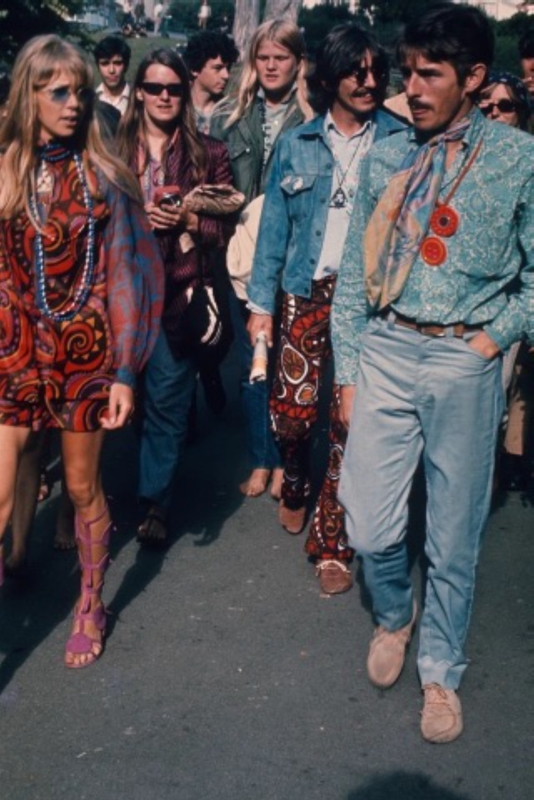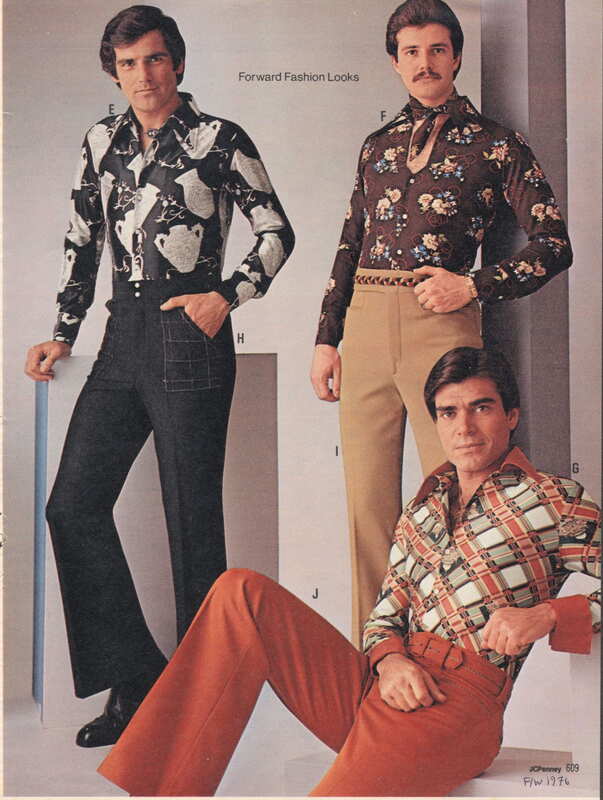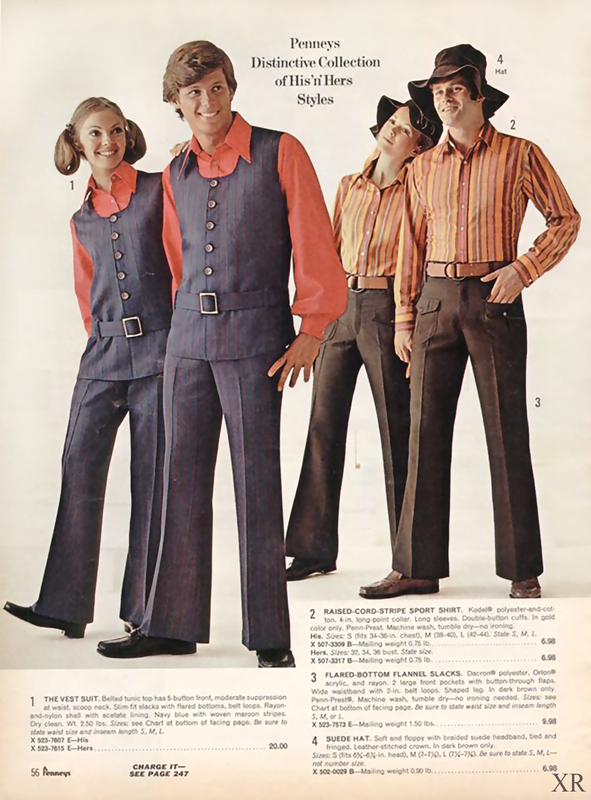To the U.S
Youth Quake in the USA
As for the U.S., the youthquake of the 1960s was what perpetuated the peacock revolution and created change, for both social norms and fashion.
“The term, ‘Youthquake’ was first coined by American Vogue’s then editor-in-chief, Diana Vreeland, in 1965 to emphasize the dramatic shift towards youth-centered media and culture that was happening across the globe” (Zanzi 2).
The young men of the time were tired of the bleak conformist ways of their fathers and grandfathers; they wanted a more distinct identity for themselves. They experimented with nonconformist forms of masculine identity in clothing, heavily influenced by the menswear revolution of the Peacock Revolution. This included shirts with vibrant colors, jewelry, and hair being grown out longer than average.
“Moreover, the peacock dress of baby boomers was a welcomed nontraditional visual identity that was a distinct departure from that of their fathers – the conformist herd of men in gray flannel suits'' (Hill, pg.xi).
Parents were not thrilled with this as they saw anti-Establishment activism as juvenile rebellion or at worse, an act of cowardice related to antiwar activities. Many traditionalist parents were also worried that the effeminate clothes, jewelry, hair, etc., were going to turn America's boys into homosexuals. This was especially scary in their minds because homosexuality was considered a mental illness, and in addition was frowned upon by religions at the time. These views are also misogynistic, because they are openly claiming that to be seen as feminine is to be seen as ‘lesser’ in society.
However, the young men felt that by showing bravery and manly resolve in the face of intimidation and violence by police and protesting, that they were what it truly meant to be a man. “And rather than concern about effeminacy in their clothing choices, most youthquake men regarded their peacock shock dress as a personal expression of individuality and modernity. But most important of all, girls were attracted to the sexually confident peacock” (Hill, pg.xi).


